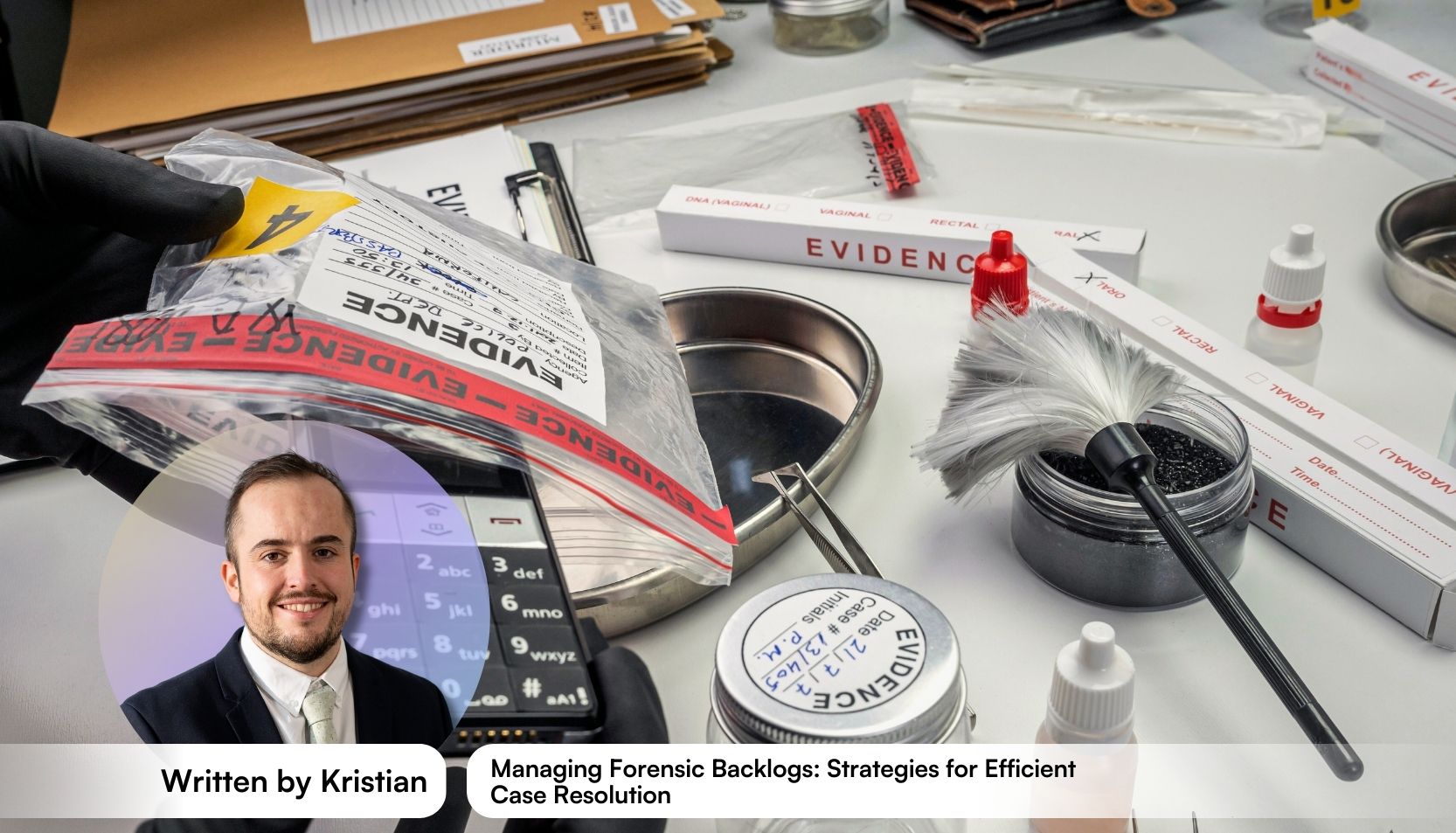

By Kristian, SYTECH Digital Forensics Services Manager
Forensic laboratories across the country face growing challenges as the number of cases increases. With more digital evidence to process and limited resources, delays in forensic results can hold up criminal investigations and slow the justice system. Backlogs have become a major hurdle for police forces and law enforcement agencies, but by implementing smarter strategies and leveraging modern technology, these delays can be reduced.
The rise in digital devices (smartphones, laptops, and cloud-based storage) has added complexity to forensic work. Traditional evidence processing is now joined by digital forensic examinations, making it harder for laboratories to keep up. Each device submitted for forensic analysis may contain large amounts of data, requiring detailed examination and reporting. Additionally, the number of cases needing forensic services continues to grow, while staff and resources often remain the same.
Even with experienced teams, the volume of cases can overwhelm capacity, leading to lengthy delays. These backlogs not only frustrate investigators, but they also slow down the entire criminal justice system. When forensic evidence is stuck in processing, court cases may be delayed, suspects may remain in custody longer, and victims may feel the legal process isn’t working quickly enough to resolve their situations.
Not every case has the same urgency. By focusing first on the most serious crimes, forensic teams can deliver results faster where they’re needed most. A clear system for deciding which cases are urgent helps ensure that violent crimes, for example, receive quicker attention than minor offenses. This prioritisation allows law enforcement agencies to use limited resources in the most effective way.
Advanced forensic tools and automated systems can significantly speed up the process. Modern tools are designed to handle large volumes of data quickly and accurately. They can sort through files, identify key evidence, and streamline the reporting process. Automation can also handle routine tasks, such as file categorisation and metadata extraction, freeing forensic staff to focus on more complex analysis.
Automation doesn’t just save time, it also reduces human error. By minimising manual steps, the risk of mistakes decreases, leading to more reliable results. In the long run, investing in these technologies allows forensic laboratories to handle more cases without requiring additional staff.
Continuous training for forensic scientists ensures they’re up-to-date with the latest technology and techniques. New challenges, such as emerging digital platforms and encrypted devices, require specialised knowledge. With better training, forensic teams can handle these complexities more efficiently. Additionally, training improves overall quality, reducing errors and increasing the accuracy of results. This can lead to faster case resolutions and greater trust from law enforcement agencies and the courts.
Collaboration between police forces, forensic laboratories, and other law enforcement agencies can make a big difference. Sharing resources, knowledge, and equipment spreads the workload more evenly. For instance, agencies in different regions can pool their expertise on complex cases, while smaller laboratories can turn to larger facilities for help when their backlog grows too large. This type of collaboration prevents any single laboratory from becoming overloaded and ensures that cases continue moving forward.
Regularly reviewing performance metrics, such as how long cases take, how many are still waiting, and where bottlenecks occur, can help identify problem areas. With this information, forensic teams can make targeted improvements. For example, if a specific type of case tends to cause delays, laboratories can focus on streamlining that process. Over time, consistent monitoring allows for ongoing refinement, ensuring that backlogs don’t build up again.
Delays often start at the crime scene. If evidence is poorly handled, mislabeled, or not properly documented, it can slow down forensic processing. Providing clear guidelines and training for evidence collection teams ensures that the material sent to forensic labs is ready for efficient analysis. This step is often overlooked, but it’s critical to preventing issues further down the line. A well-trained evidence collection team helps streamline the entire forensic process.
In addition to improving technical processes, communication within law enforcement agencies plays a key role in tackling backlogs. Ensuring that investigators, forensic staff, and administrators are on the same page helps avoid confusion and keeps cases moving smoothly. Regular check-ins between these groups can help quickly identify potential slowdowns and address them before they become major issues.
Managing forensic backlogs requires a combination of updated technology, skilled professionals, and efficient procedures. By prioritising cases, investing in advanced tools, and fostering collaboration, law enforcement agencies can tackle delays and ensure timely results. Additionally, training staff and refining evidence collection processes help prevent backlogs from occurring in the first place.
With these strategies in place, forensic laboratories can handle the growing demands of modern criminal investigations. Timely and accurate forensic results not only support justice but also enhance public confidence in the criminal justice system.